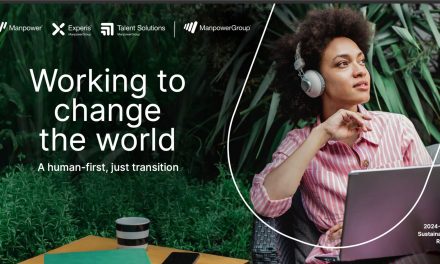The pandemic triggered a seismic shift in how we work, with remote and hybrid models becoming the norm for many businesses. However, as the dust settles, a growing number of companies are opting to return to the office full-time, sparking fresh debate on the long-term viability of remote work.
A key driver of this shift is the challenge of maintaining strong company culture and team cohesion in remote settings. Offices provide spontaneous, face-to-face interactions that foster creativity, collaboration and a sense of belonging—elements that can be difficult to replicate virtually. For many organisations, the office remains vital for nurturing innovation and strengthening corporate identity.
Additionally, concerns around productivity and employee well-being are driving the return to in-office work. While remote work offers flexibility, it can blur the line between personal and professional life, leading to burnout for some employees. Many businesses find that the structure and routine of the office environment provide better oversight, clearer boundaries, and more direct engagement, helping both managers and employees maintain balance and productivity.
Despite the return-to-office trend, many companies that are tech-driven such as inDrive, a global technology and leader in the gig economy, are finding a middle ground with hybrid work models that can offer the best of both worlds. One effective approach is to personalise hybrid work arrangements, tailoring the experience to meet the diverse needs of their workforce.
“For companies that continue to embrace the hybrid work model, it is crucial to reassess their strategies and adapt to current realities,” said Aravind Ganesan, Senior Human Resources and Payroll Manager, APAC at inDrive. “Personalising the hybrid work model not only acknowledges the unique circumstances of each employee but also enhances engagement and productivity, ensuring that everyone can thrive in a way that suits them best.”
1. Customising Hybrid Work for Different Roles
Not all roles are the same, so hybrid work should not be a one-size-fits-all solution. Some positions require more collaboration, making in-office days essential for brainstorming sessions and creative teamwork, while others benefit from focused, remote environments. By designing hybrid schedules that are tailored to the specific needs of each team or role, businesses can maximise productivity without imposing rigid working patterns.
“For example, we employed a different approach when it comes to our customer care department in which employees work longer hours. In such instances, we practise a 2-day-on, 2-day-off schedule to ensure the employees get adequate amounts of rest and family time to ensure they come to work fully motivated,” added Aravind.

2. Tailoring Work to Life Stages
Employees at different stages of their personal and professional lives have varying needs. Younger professionals may seek the energy and networking opportunities that come with being in the office, while employees with families may prioritise flexibility to manage home responsibilities. Offering a hybrid model that recognises these life stages allows businesses to be more supportive and inclusive. This personalisation shows employees that their unique situations are valued, fostering loyalty and long-term retention.

3. Hyper-Personalised Schedules for Peak Productivity
One of the most significant advantages of hybrid work is the ability to align work schedules with personal productivity peaks. Some employees thrive in the morning, while others perform better in the late afternoon or evening. By allowing employees to personalise their hybrid schedules—choosing in-office days when team collaboration is needed and remote days for focused tasks—companies can create an environment that enables everyone to work at their best. This flexibility not only boosts productivity but also enhances the overall employee experience.

4. Fostering Personalised Development Through Hybrid Models
Hybrid work offers an innovative approach to employee development. In-office days can be dedicated to hands-on mentorship, team-building activities or professional development workshops, while remote days can be reserved for independent learning or skill development. This arrangement allows employees to balance their professional growth with work responsibilities, creating a personalised development plan that aligns with their career goals. By integrating learning opportunities into the hybrid model, companies can demonstrate their commitment to continuous development, which is crucial for retaining top talent.

“The debate over remote, hybrid, and in-office work will continue to evolve as companies adjust to the new normal,” Aravind adds. “What’s clear is that the future of work is flexible and varied, with no one-size-fits-all solution. For organisations still committed to remote or hybrid models, long-term success lies in refining the approach to address its challenges, which will not only boost productivity but also enhance employee satisfaction and retention.”
The future of work may be uncertain, but businesses that prioritise adaptability and employee well-being will be well-positioned to thrive, whether in the office, at home or somewhere in between.












